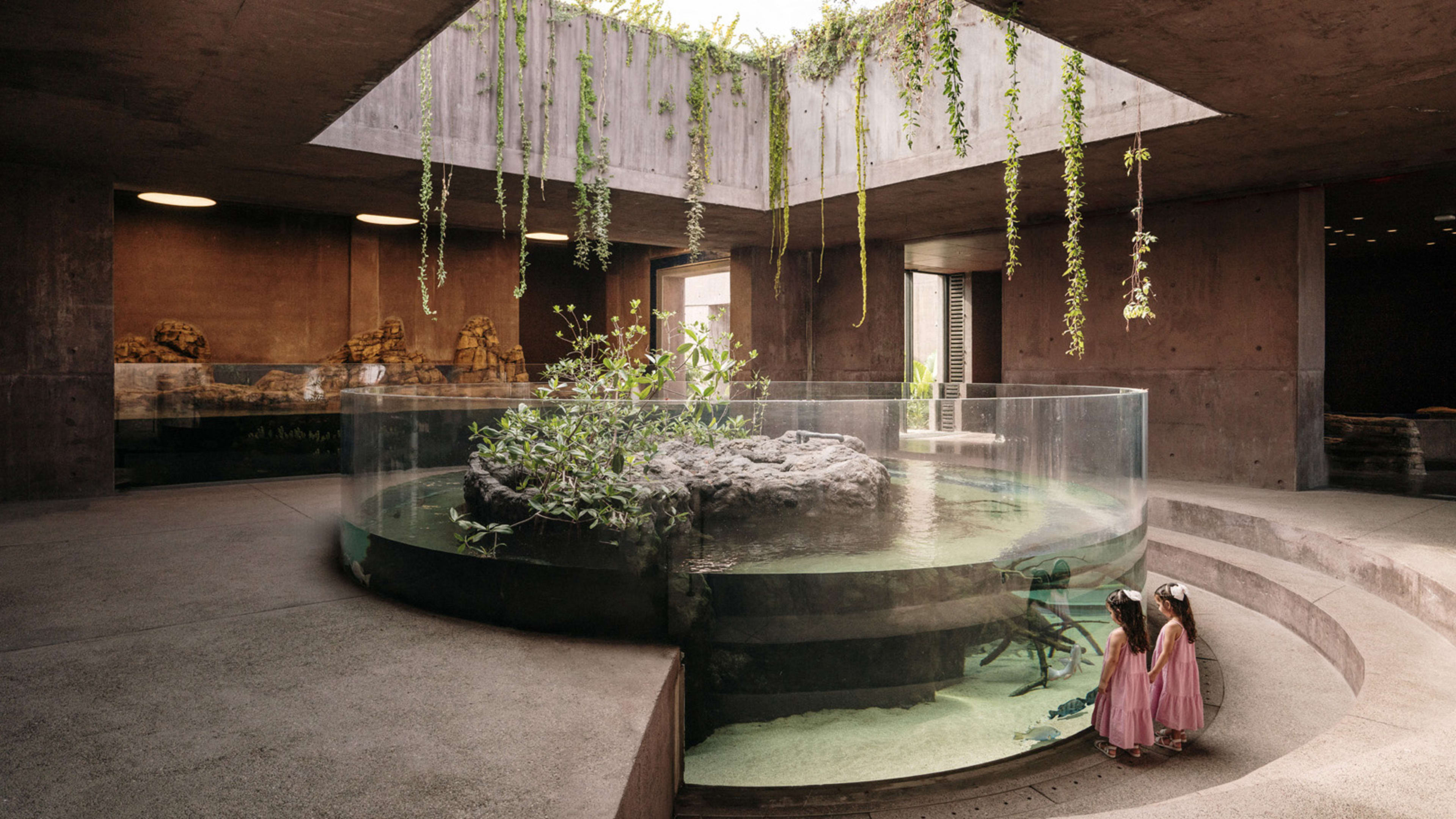Should the oceans rise up and envelop the new Sea of Cortez Research Center in the Mexican city of Mazatlán, its true design intent will have been realized. The building is a bold and visually stunning concrete bunker that houses a unique new aquarium. Situated on the coast of the Mexican mainland, across the Sea of Cortez from the southern tip of the Baja California peninsula, it was designed by the Mexico City-based architecture firm Tatiana Bilbao Estudio.
The building’s monolithic form was the result of an interesting though experiment. The designers conceived of the building as if it were first encountered in the year 2289, after more than a century under water. The people who found it in this imaginary scenario have no clear idea what it is for.

The building was imagined to be something that had been subsumed by nature—its form dictated more by nature itself than the architects. “We decided that it was better to think of a building where nature would take over the place,” says Alba Cortés, project director at Tatiana Bilbao Estudio, by email. “It was a living building.”

The aquarium has a sharply geometric form of intersecting linear walls that frame large circular volumes like Os in a game of Tic-Tac-Toe. Deep inside, massive tanks holding sea life are surrounded by darkness, and other smaller pools open to the air and natural elements. Monolithic walls rise high above the usable space. The unfinished concrete that makes up the vast majority of the building looks both old and new at the same time, vaguely reminiscent of ancient pyramids with a filter of mid-century Brutalism.

The three-level, 180,000-square-foot facility holds several gigantic tanks for deep sea creatures, and one tubular tank that rises vertically through the entire space. Some tanks are open to the sky; the building is carved through with numerous skylights and portals. The design makes much of the space inside either directly or indirectly exposed, allowing the humid climate to permeate, and the plant life to grow. “We came up with a building without a clear typology, where a structural grid deforms and flexes where the habitats emerge. Thus the work will have its own evolution, just like nature,” says Cortés. Nature, she says, “envelops you as you walk through it.”

The designers visited several aquariums around the world to see how these unique buildings operate, including celebrated aquariums in Chicago, Lisbon, and Monterey. As an aquarium, the Center brings visitors into close contact with sea life, but it also encourages them to see humans as being not so separate from nature, be it deep in the ocean or in the growing ecologies that surround even the most dense cities. The building is an attempt to reintegrate humans into the natural world. Envisioning the building as one that has been swallowed by the sea and then spat back out is an apt analogy for that goal. “It shows us a way to coexist in this world as our existence is becoming unsustainable for the planet,” says Cortés.

Since the building was finished late last year, plants have already filled in many of its crevices and spilled over its oculus-like sky portals. The architects expect this overgrowth to continue, blurring the lines between building and nature. As sea levels rise, the line between land and ocean may also slip away. “Nature will continue to ‘invade’ the spaces to the point that perhaps it will end up as we had imagined from the beginning: the sea will take it over completely and sometime later it will be rediscovered,” Cortés says.
Recognize your brand’s excellence by applying to this year’s Brands That Matter Awards before the final deadline, June 7.
Sign up for Brands That Matter notifications here.
